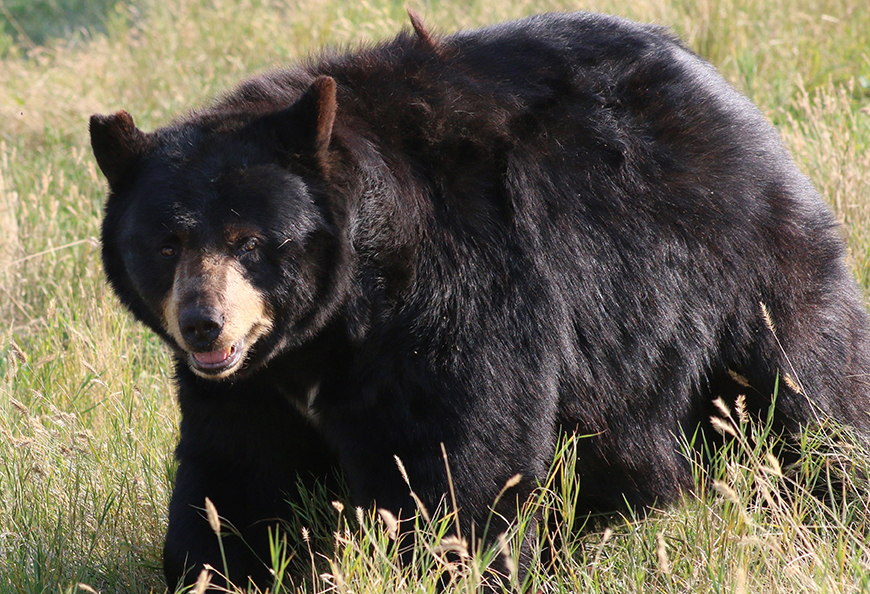American black bear
Ursus americanus

At the Zoo
You can find our two black bears in Bear Country to the left of Wolf Canyon.
Fascinating Facts
- American black bears are extremely adaptable and are capable of surviving in a wide variety of habitats. Their adaptability means that they can live off of many different types of food, eating cactus fruit in the southernmost part of their range and hunting mammals in the northern part of their range.
- There are twice as many American black bears as there are all other bear species combined.
- Many famous bears were inspired by black bears, including the teddy bear, Winnie the Pooh, and Smokey the Bear. In addition, black bears play a prominent role in many Native American cultures.
Physical Characteristics
The name “black bear” is somewhat of a misnomer, as these bears can come in a wide variety of colors from light brown to cinnamon to grey. Some of these coat variations are regional, but cubs of the same litter can range in coat color. American black bears are differentiated from brown bears by the shape of their head, which slopes in a straight line from their brow to their nose. They also lack the distinctive shoulder hump of a brown bear and have shorter claws more suitable for climbing. They are excellent climbers, as well as being fast runners and capable swimmers. Males weigh between 130 – 500 pounds, while females are slightly smaller, weighing between 90 – 330 pounds.
Their lifespan is approximately 25 years.
Habitat/Diet
American black bears inhabit a wide variety of forests, including open woodland, scrub forest, swampland and temperate rainforest, from sea level up to 11,000 feet. They are found in Canada, forested parts of the United States, and northern Mexico.
They are opportunistic omnivores and will feed on a wide variety of food, including nuts, berries, roots, fruits, insects, eggs, fish, mammals, and carrion. In areas near human habitation they will also feed on items associated with humans, such as garbage, birdseed, and crops.
Social Behavior
American black bears are active mostly at night, but can also be active during the daytime. They can have large home ranges and are mainly solitary, except during the breeding season, when they can become territorial. Groups can form around large food sources.
Breeding takes place in June or July and the implantation of the embryo is delayed. The embryo then implants itself in the womb in November and a litter of up to six cubs will be born in January, while the mother is denned. In the northern part of its range, black bears will hibernate, while in the southern part of its range it may hibernate for a shorter period of time or not at all. Mothers will den to give birth regardless if they are hibernating or not. Cubs are weaned between 6 – 8 months old and will remain with their mother for a further 9 months after weaning, spending a second winter hibernation together. Females reach sexual maturity at 4 – 5 years and males later than that.
Status In The Wild
American black bears are listed as Least Concern by the IUCN. While American black bear populations are stable overall, there are threatened pockets of populations including a population in Louisiana and in parts of Mexico. Threats to American black bears include hunting, persecution, habitat loss, and fragmentation. In recent years, black bears have been afforded a number of protections, including hunting restrictions, habitat restoration, and public education programs.
What can you do to help black bears and camp safely in their habitat?
- Always store food properly and out of reach from bears. Never approach or feed bears; this habituates them to humans and they lose their natural avoidance response.
- Spread the word about bear conservation and safety!
